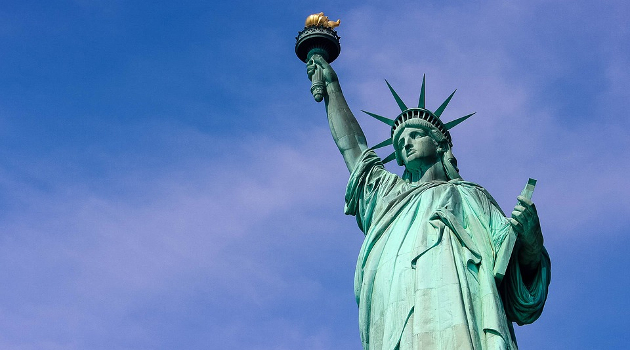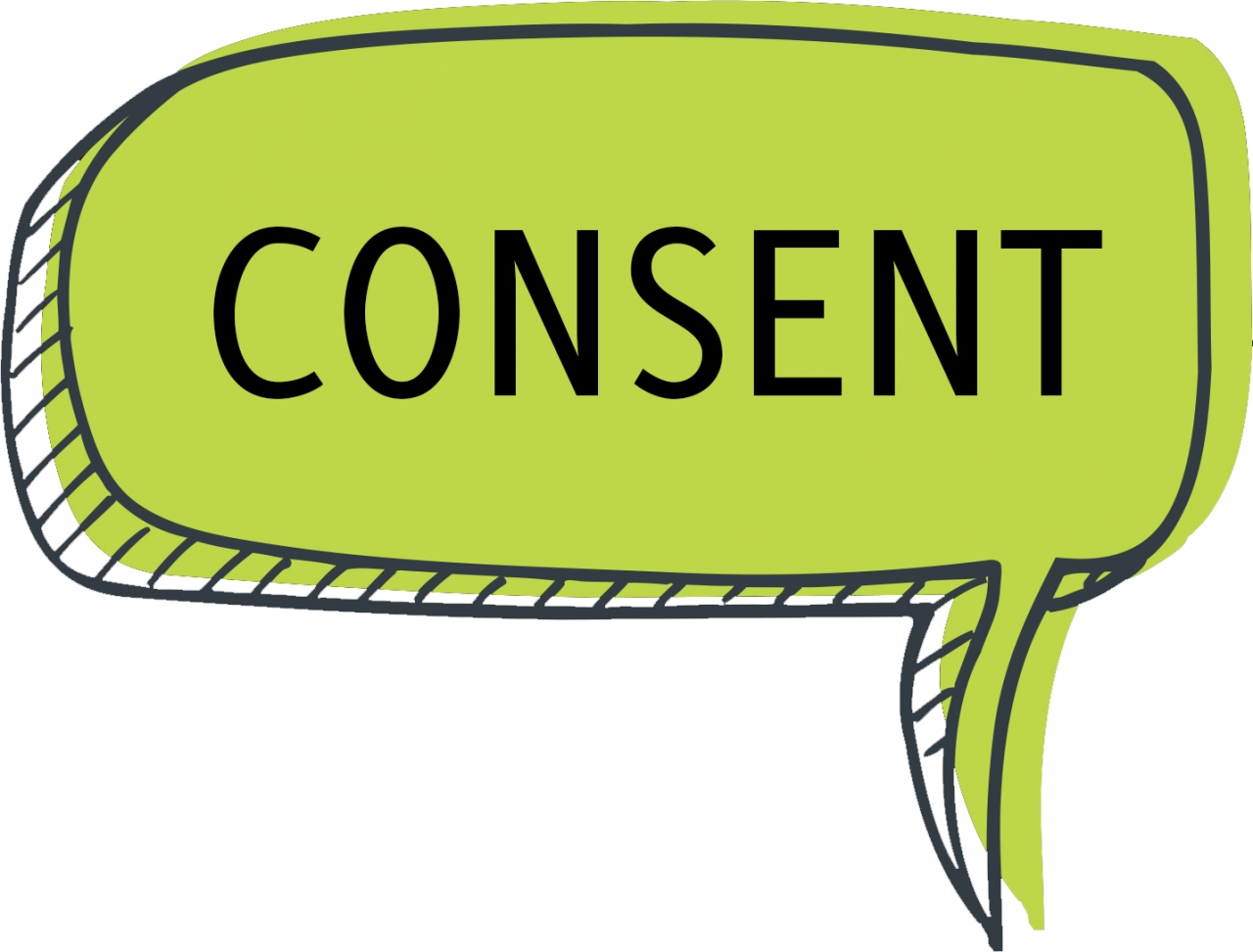This article is written by Aksshay Sharma, pursuing 3 year LLB from Department of Laws, Panjab University, Chandigarh. The article explains the Reconstruction amendment aimed at abolishing slavery and establishing equality for African-Americans.
Table of Contents
Introduction
In Somerset v. Stewart, Lord Mansfield said that slavery is of such a nature that it is incapable of being introduced for any reason, except by positive law. He further remarked that it is so odious that nothing can be suffered to support it. Thus, for lack of laws at that time to legitimise slavery in England, he said the black (Somerset) must be discharged.
Slavery was prevalent in the United States of America since the colonial occupation, until the issuance of the Emancipation Proclamation(1863) and the enactment of the 13th Amendment to the U.S. Constitution. Slaves were brought by the Europeans primarily from Africa through the Atlantic Ocean, which came to be known as the “The Atlantic Slave Trade.”
The Reconstruction amendments
The Reconstruction amendments were the set of 3 amendments to the American Constitution introduced during the reconstruction era. They were passed in a span of 5 years, the 13th Amendment in 1865, 14th Amendment in 1868 and the 15th Amendment in 1870. However, the intent for passing these amendments were not realised until the American Civil Rights Movement under the leadership of Martin Luther King Jr, particularly in case of the 15th Amendment. They are also known as The Civil War amendments because these amendments were the result of the American Civil War.
These amendments were aimed to ensure equality in social and political sphere for Africans-Americans, by abolishing slavery, providing African-Americans with citizenship as well as equal protection of the law and by giving them voting rights. The main aim of the Civil War was the abolition of the institution of slavery and to treat African-Americans as equals.
The 13th Amendment
It abolished slavery and involuntary servitude except as a punishment for a crime and it also empowered the Congress to pass appropriate law to effectuate its abolishment.
According to Section 1 of 13th Amendment neither slavery nor involuntary servitude, shall exist within the United States, except as a punishment for crime only if the party has been duly convicted for that crime.
Section 2 says that Congress shall have the power to enforce this article by appropriate legislation. Thus, Section 2 acts as an enabling provision for the Congress to pass laws which would eliminate direct or indirect instances of slavery.
The abolition of the institution of slavery by enacting the 13th Amendment is described as “Emancipation.” Section 2 is an enforcement clause which empowered the legislatures to pass civil rights laws. This resulted in the enactment of 1st ever Civil Rights Act of United States, The Civil Rights Act of 1866, which gave blacks the same right in every state, allowed them to make and enforce contracts, to sue and be sued, enabled them to inherit, purchase, sell, and convey(transfer) real and personal property and provided the full and equal benefit of all laws and proceedings for the security of person and property as was enjoyed by white citizens. The Civil Rights Act was meant to protect the civil rights of persons of African descent born or brought to the United States.
According to M. Russell Thayer, “the constitutional abolition would allow freed persons to enjoy “those great natural rights to which every man is entitled by nature.” The expression “ life, liberty and property” according to John Locke are inalienable natural rights, which the state cannot deprive a person of.
Abolition of all types of servitude
The amendment bars not just slavery but also involuntary servitude which includes other forms of forces labour like “ Mexican peonage” in which a person is made to work to pay off debt and the Chinese coolie labour system. In the Slaughter-House Cases, 83 U.S. (16 Wall.)
“Although the Negro slavery alone was in the mind of the Congress which proposed the thirteenth article, it forbids any other kind of slavery. If Mexican peonage or the Chinese coolie labour system shall develop the slavery of the Mexican or Chinese people within our territory, this amendment may safely be trusted to make it void”
However, in Butler v. Perry (1916) Florida state laws provided that Every able-bodied male person between 21-45 years of age, residing in said county for thirty days or more continuously, shall be, liable and required to work on the roads and bridges of the several counties for six days for at least 10 hours every year when summoned to do so or else he can pay a sum of $3 to the road overseer on or before the day he is called upon to render such service in lieu of the required labour. If a person fails to do so then he will be held guilty of a misdemeanour and upon conviction shall be fined up to $ 50 or imprisoned in the county jail for not longer than thirty days.
The plaintiff on failing to put in his time on the roads was convicted and was sentenced to jail he contended that the law mandated “involuntary servitude” within the meaning of 13th Amendment.
Rejecting his contention of involuntary servitude the Supreme Court of Florida ruled that “the term ‘involuntary servitude’ was intended to cover those forms of compulsory labour which are akin to African slavery and which in practical operation, would tend to produce undesirable results.
Similarly, the contracts of seamen, involving to a certain extent the surrender of personal liberty, may be enforced without regard to the 13th Amendment (Robertson v. Baldwin).
Section 1 is unique
It is unique because it bars everyone, even private persons from holding slaves or forcing people into servitude. This is unique because most constitutional provisions in a democracy only restrict the power of the state, in line with the Social Contract theory. The 13th Amendment for the first time mentions the expression “Slavery.”
The Black Codes
Slavery is the permanent violent and personal domination of Nataly alienated and generally dishonoured persons. The13th amendment although abolished slavery and emancipated the slaves but it allowed involuntary servitude as punishment for a crime. This exception resulted in the enactment of the “Black Codes”, which indirectly allowed slavery. These codes were more prevalent in the Southern States of America, where agriculture was predominant and they needed slaves to work on farms as cheap labour during the post-Civil-War period.
According to Michelle Alexander’s work “The New Jim Crow” after the civil war, black codes sent many black people to prison, more than ever before. This led to the “Prison Boom” by the end of the 19th century. The Black Codes provided a legal way to put Black people into indentured servitude by taking their voting rights away. It controlled where they lived and how they travelled and seized children for labour purposes. In other words, the Black Codes regulated the behaviour of black citizens. According to historian Daniel A. Novak in his book The Wheel of Servitude to the intent of the codes was to produce a close approximation of the forbidden slavery system, in which one was the master and other his slave..
Jim Crow Laws
After the civil war, some states began imposing restrictions on African-American through various segregation laws which came to be known as Jim Crow Laws. Jim Crow laws were a collection of state and local laws and provisions that indirectly legitimised racial segregation. These laws existed until 1968 and were more prevalent in the Southern states of America who supported the Slavery system. These laws were aimed to marginalise the African-American.
It must be noted that Jim Crow laws were not a single universal legislation, rather it was a group of formal and informal laws and practices which collectively came to be known as Jim crow laws. Jim Crow represented the legitimization of anti-black racism. It became a way of life for blacks in America. The main reason for the proliferation of Jim Crow laws was U.S. Supreme Courts decision in The Civil Rights Cases (1883) in while it upheld discrimination by private individuals on the basis of race.
Stetson Kennedy’s Jim Crow Guide (1990), provided the following rules that blacks were to observe while interacting with the Whites
- Never assert or even intimate that a white person is lying.
- Never impute dishonourable intentions to a white person.
- Never suggest that a white person is from an inferior class.
- Never claim, or overly demonstrate to have superior knowledge or intelligence than a white
- Never curse a white person.
- Never ridicule or laugh derisively at a white person.
- Never comment upon the appearance of a white female.
These laws also included separate drinking water cooler, separate compartments in public transports, even many private places of public resorts denied entry to Blacks. Areas were marked as “Whites Only” and “Colored”. African Americans were denied the right to vote through the imposition of poll taxes and unfair eligibility tests. Further, the right to vote was also denied through the insertion of grandfather clauses, they were the laws that allowed the right to vote to only those people whose ancestors had voted before the Civil War. ( before the Civil war under slavery, blacks couldn’t vote).
Similarly, Alabama, in 1930, made it illegal for blacks and whites to play checkers or dominoes together. Blacks who violated Jim Crow norms, risked their homes, jobs, even their lives. Whites could physically beat blacks with impunity. Justice against these assaults was limited because the Criminal justice system based on Jim Crow laws were all-white.
The U.S. Supreme Court in The Civil Rights Cases (1883) distinguished between slavery and private discrimination based on race. It ruled that the 13th amendment does not authorise Congress to prohibit discrimination in ‘public places of accommodation’ and ‘public transport’. According to the court, the 13th amendment abolished only slavery. The Supreme Court, as a result, struck down the Civil Rights Act of 1875, which prohibited private persons from violating full and equal enjoyment of public accommodations on grounds of race and colour. It said that;
“The XIII Amendment relates to slavery and involuntary servitude only (which it abolishes).
It further said that;
Although XIII Amendment establishes universal freedom in the United States, and Congress can pass laws directly enforcing its provisions, yet such legislative power extends only to the subject of slavery and its incidents, and that the denial of equal accommodations in inns, public conveyances, and places of public amusement, does not impose a badge of slavery or involuntary servitude upon the party but at most, infringes rights which are protected from State aggression by the XIV Amendment”.
Therefore, according to the court, the 14th Amendment was not meant to prevent one citizen from harming another the Court was determined that this amendment only protected citizens from state action. However, only one judge dissented with the majority opinion and regarded it as segregation, he said;
“Segregation, he argued, perpetuated a system of black subservience, while the Thirteenth Amendment secured the complete freedom that necessarily involved immunity, and protection against, all forms of discrimination against them, particularly on the basis of race, in respect of those civil rights as belong to freemen of other races”.
The Civil Rights Cases (1883) was a result of instances where theatres in New York and California would allow a seat to the African Americans. A hotel in Missouri and a restaurant in Kansas that would not serve African Americans, and a train in Tennessee that would not allow an African American woman in the “ladies” car.
Following this decision that 13th and 14th amendment does not outlaw private racial discrimination resulted in several northern states enacting their own ban on discrimination in public places by a private individual. But some southern states did the opposite, they began codifying racial segregation and discrimination in-laws.
Then in Jones v. Alfred H. Mayer (1968) Supreme Court said that 13th Amendment authorised the Congress to prohibit private acts of discrimination as being “the badges and incidents of slavery.” It said that,just as the Black Codes, enacted after the Civil War became a substitute for the slave system by restricting the free exercise of rights, so was the exclusion of Negroes from white communities a substitute for the Black Codes. And when racial discrimination forces people to buy property on the basis of the colour of their skin, then it becomes a relic of slavery.
With respects to Congress’s power, it said that Congress “has the power under the Thirteenth Amendment to determine what constitutes as the badges and the incidents of slavery”, and the authority to prevent them by effective legislation
It said that the 13th Amendment includes inter-alia the freedom to buy whatever a white man can and the right to live wherever a white man can live. If Congress is not able to provide that being a free man means at least this much, then the Thirteenth Amendment made a promise which the Nation cannot keep.
The 14th Amendment
According to Section 1, all persons born or naturalized in the United States, are citizens of the United States and of the State wherein they reside. It further prohibited the State from making any law which could abridge the privileges and immunities of the U.S. citizen. Thirdly it also prevented the state from depriving any person of life, liberty, or property, without due process of law and equal protection of laws.
This amendment defined a citizen as any person who is born or naturalised in the United States. Thus it made the African-American people as citizens of the United States and repudiated the infamous ruling of the U.S. Supreme Court in Dred Scott v. Sandford. In which the Court held that “a free negro of Africa”, brought to the United States and sold as slaves, is not a citizen under the United States Constitution.
It also prohibited only the state from enacting a law, which could deprive a person of his life, liberty and property without due process of law and also provided the equal protection of the laws and prohibited the states from denying it. In U.S. v. Kozminski, 487 U.S. 931, 942 (1988),
“The Thirteenth Amendment has no state action requirement, providing Congress with the power to enact legislation against private discrimination that is currently outside the scope of the Fourteenth Amendment”
The Fourteenth Amendment was intended to recognize and protect fundamental objects long recognized under the common law system. 14th amendment guaranteed citizenship to blacks in particular and equal protection under the law to all in general.14th Amendment restrained and limited state action. It is crucial because it guarantees “equality” and “due process”.
Rejection of Dred Scott Case
It is to be noted that United States polity is an extreme case of federalism to such an extent that each state has its own constitution, apart from the federal constitution. Thus citizens of the United States enjoy dual citizenship, this means that they are citizens of the state to which they belong and also the citizens of the United States of America, Indian, on the other hand, has no such state citizenship system.
This decision in the Dred Scott case is crucial because this amendment by repudiating the decision in the Dred Scott case made the slaves/blacks citizens of the United States. In Dred Scott Case Chief Justice Taney ruled that the United States citizenship was enjoyed by only two classes of individuals:
- white persons born in the United States as descendants of those people who were at the time of the adoption of the Constitution were recognized as citizens in the several States and who then also became citizens of the United States of America,
- AND those persons who,were born outside the dominions of the United States and had now migrated to the United States and have naturalized therein.
Freed slaves fell into neither of these categories. Court further ruled that although a State could confer state citizenship on anyone it chooses, it could not make the recipient of such status a citizen of the United States. Thus, the ‘‘Negro,’’ as an enslaved race, was ineligible to attain United States citizenship, either from a State or by birth in the United States. Thus by not treating a particular class of persons as citizens of the U.S. it indirectly continued the discrimination against the blacks.
This reasoning was repudiated by the 1st Section of the 14thh amendment. In Afroyim v. Rusk (1967) Court ruled that “Fourteenth Amendment citizenship was not to be shifted, cancelled, or diluted at the will of the Federal Government, the States, or any other government unit. It said that Congress has no power under the Constitution to divest a person of his United States citizenship except in case of a voluntary renunciation
Privileges and immunities
Section 1 confers certain “privileges and immunities” on the citizens of the U.S. which cannot be denied or restricted by the state. It says that no State can make or enforce a law which can abridge the privileges or immunities of citizens of the United States.
In Slaughterhouse Cases (1872) some of the privileges were specified, these include, right of access to the seat of Government and to the seaports, sub treasuries, land officers, and courts of justice in the several States, the right to demand protection of the Federal Government on the high seas or abroad, the right of assembly, the privilege of habeas corpus, the right to use the navigable waters of the United States, and rights secured by treaty.
In other cases, immunities and privileges included the right to vote for national officers, the right to enter public lands, the right to protection against violence while in the lawful custody of a United States marshal i.e. a right to be protected against State Official, and the right to inform the United States authorities of violation of its laws. In Hague v. Committee for Industrial Organization (1939) Court held that the freedom to use municipal streets and parks for the dissemination of information concerning provisions of a federal statute and to assemble peacefully therein for a discussion of the advantages and opportunities offered by such act was a privilege and immunity of a United States citizen.
Thus privileges and immunities under the 14th Amendment include Civil Rights which a state cannot deny or abridge. It protects against state intrusions on substantive rights and privileges.
Due Process
Due process can be understood as the existence of “Fundamental Fairness”.Due process under the 14th Amendment includes Procedural Due Process and Substantive Due Process. According to Edward Coke, the law of the land and due process of law were interchangeable terms that possess both procedural and substantive meaning.
Due process of law is explained under the 5th Amendment of the U.S. Constitution according to which people affected by a legal proceeding affecting their life, liberty and property must receive a notice ( an acknowledgement) of it and should have an opportunity to be heard. It also says that legal proceedings must be conducted in a fair manner by an impartial judge who will allow the parties to present fully their complaints, grievances, and defences. Thus it means incorporation of Natural Justice, so that the law, substantive or procedural is free from arbitrariness.
The rule that individuals shall not be deprived of life, liberty, or property without notice and an opportunity to defend themselves predates written constitutions and was widely accepted in England. Magna Carta contains the earliest instance of Due-Process “No free man shall be seized, or imprisoned, except by the lawful judgment of his peers, or by the law of the land”
Equal protection of laws
The primary aim of the 14th amendment was to grant citizenship to the freed slaves. This was achieved not just by declaring them as citizens but also by treating them as equals and by prohibiting states from abridging the “privileges and immunities”.
Equal protection of laws prohibits the states to discriminate against any individual. It means that a law should not discriminate among people who are similarly situated, that protection of the law will be given equally and no persons will be discriminated from getting the protection of the law if they are situated in a similar circumstance, i.e. the liabilities imposed on them is similar.
The equal protection of laws is another step towards the idea of Thomas Jefferson that “all men are created equal”, apart from abolition of slavery.
Plessy v. Ferguson (1896)
Even after the enactment of the 14th amendment, equality was considered to be achieved by the abolition of slavery alone. And for the U.S. Supreme Court “segregation” did not amount to discrimination. This legitimization to segregation was given in Plessy v. Ferguson (1896). In this case, the court considered whether racial segregation by the government violated the Constitution.
This was due to the decision in The Civil Rights Cases (1883) in which the court said that the 14th Amendment was not meant to prevent one citizen from harming another. This is because for the Court it only protected citizens from state action.
In Plessy v. Ferguson, Louisiana in 1890 a passed the “Separate Car Law, which provided for separate cars /compartments in trains for blacks and whites. This segregation was upheld by the court and it laid the “Separate but equal” principle, according to which if the facilities given to whites and blacks are equal, then separation based on colour is not outlawed. The segregation by the Louisiana law was challenged as being violative of “equal protection of laws” under the 14th Amendment and also 13th amendment. The plaintiff-Plessy also contended that segregation stigmatized blacks with a “badge of inferiority”. However, the Majority opinion ruled that the 13th amendment prohibited only slavery and not segregation. As Justice Bradley said,
“to make it (slavery) apply to every act of discrimination which a person may see fit, or to make people as to the guests he will entertain, or the people he will take into his coach or cab or car would mean running the slavery argument into the ground”
The majority infamously also held that, to consider that the enforced separation of the two races (whites and blacks) stamps the coloured race with a badge of inferiority, then it is not because of anything in the act, but it is because the coloured race themselves chooses to put that construction upon themselves.
It also said that protections of the 14th Amendment applied only to political and civil rights (like voting and jury service), not “social rights”.
It said that equal protection of laws clause provides for absolute equality before the law. Court also relied on a similar judgement of Roberts v. City of Boston(1849) in which the general school committee of the city of Boston had power, under the constitution and laws of the commonwealth, to make provision for the instruction of education for coloured children, in separate schools established exclusively for them, and to prohibit their attendance in the other schools meant for Whites. The court ruled that
“by the constitution and laws of Massachusetts, all persons without distinction on the basis of sex, age,birth,or colour,origin or condition are equal before the law. But when this great principle is applied to the actual and varied conditions of persons in society then it cannot allow the assertion that men and women are legally clothed with the same civil and political powers, and that adults and children legally have the same functions and be subject to the same treatment”
After holding racial discrimination as valid if the facilities provided to whites and blacks are equal, the Jim Crow law cemented and proliferated in other southern states. This further aggravated the condition of Blacks in America, even culminating in “the Black Lynchings.”
“Separate but equal” principle rejected
In Brown v. Board of Education of Topeka,(1954) The U.S.Supreme Court overturned the “separate but equal” doctrine as was established in Plessy v. Ferguson.
It said in Brown case, that the segregation of White and Negro children in the public schools solely on the basis of race, and based on these state laws permitting or requiring such segregation, denies the Negro children the equal protection of the laws guaranteed by the Fourteenth Amendment, even though the physical facilities and other “tangible” factors of white and Negro schools are equal.
This decision inspired the American Civil Rights Movement under Martin Luther King Jr.
The 14th Amendment not just gives citizenship to the blacks but also gives the outline as to how they must treat their citizens (which includes blacks as well). It is the statutory recognition of Abraham Lincoln’s idea of equality. According to Lincoln, denial of equality and dignity was a “monstrous injustice”. According to him, it robbed the nation of its “ just influence in the world”.
The 15th Amendment
According to Section 1, the right to vote of a United States citizen shall not be denied or abridged by the United States or by any State by reason of race, color, or previous condition of servitude.
Section 2 empowers the Congress to enforce Section1 by an appropriate law.
The 15th Amendment was passed by the Congress in 1869 and was ratified in 1870. It is the last Civil War amendment.
This amendment protected the voting rights of African- Americans. It prohibited the state from restricting or denying the right to vote on the basis of race, color, or on the basis that the person was a slave. It also empowered the Congress to pass a law to effectuate this amendment. Thus the 15th Amendment not only
15th amendment makes no mention of sex. It was not until the passage of the 19th Amendment in the year of 1920 that women were explicitly given the vote.
The14th Amendment protected only civil rights and later Social rights as well and the 15th Amendment protected political rights. However, after the enactment of the 15th amendment, Southern states made efforts to infringe and indirectly deny voting rights to Blacks in America by Grandfather clauses, Poll taxes and literacy tests. These barriers were resolved and equality in the political sphere was ensured after the enactment of the Voting Rights Act of 1965.
Conclusion
The enactment of the Reconstruction Amendments (13th, 14th and 15th) gave the federal courts the authority to intervene whenever a state threatened fundamental rights of its citizens. However, the immediate aim of the amendments was not achieved immediately until the Civil Rights Movement. The Black Codes and Jim Crow laws aimed at maintaining the white dominance over blacks hindered the process. It prevented African-Americans from achieving full citizenship and equality.
Thus, Federal and state governments failed to secure the rights guaranteed to former slaves by constitutional amendments, especially in the Southern states, who never wanted slavery to end. According to Eric Foner “Reconstruction can only be judged a failure.”The end of Reconstruction efforts in 1877 further contributed to the denial of rights to the black Americans and resulted in the emergence of white supremacists such as the Ku Klux Klan. Even today discrimination against the African-Americans is prevalent. However, the newer generation is advocating for the end of discrimination against Blacks, evident from the 2020 protests in the United States after the death of George Floyd under the label of “I can’t breathe” to showcase the extent of discrimination and violence against the community.
References
LawSikho has created a telegram group for exchanging legal knowledge, referrals and various opportunities. You can click on this link and join:
https://t.me/joinchat/J_0YrBa4IBSHdpuTfQO_sA
Follow us on Instagram and subscribe to our YouTube channel for more amazing legal content.
 Serato DJ Crack 2025Serato DJ PRO Crack
Serato DJ Crack 2025Serato DJ PRO Crack











 Allow notifications
Allow notifications



